2016.02.18
Seikado Bunko Art Museum – “Matcha” vs “Sencha”
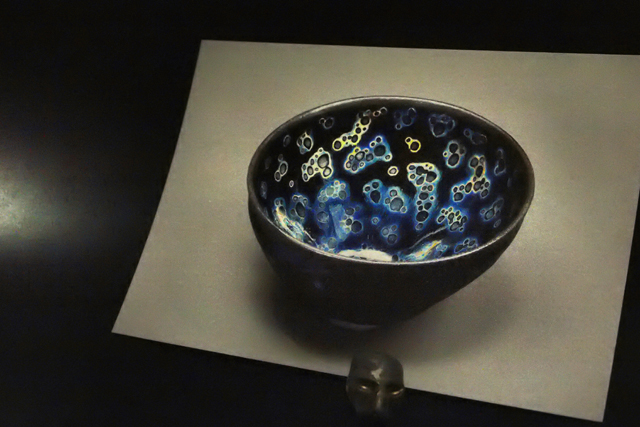
The outskirts of Setagaya. Ascend a tranquil small hill and an elegant building will come into view. It is the Seikado Bunka Art Museum and it carries a large number of literary works and art pieces from the Mitsubishi zaibatsu Iwasaki family collection.
Two years ago, an abnormal interest in clay pottery that had been simmering in me finally boiled over. I was intensely drawn to the beauty of the Yohen Tenmoku tea bowls that I had often come across in art books and catalogs. Last spring, upon learning that this museum carried them in its collection, I went to see the tea bowls, but unfortunately renovations prevented me from catching even a glimpse.
It was the end of October after a hot summer, as I walked the antique pottery villages as though possessed, when I got wind of a rumor that the first exhibition following renovations would opened. I headed to the private preview for the media.
“Lineage of Gold and Silver – Beauty Cultured by Sotatsu, Korin and Hoitsu”. [This exhibition has already ended.]
Important cultural asset – Korin Ogata – Starting with “Writing box with Sumino-e design, maki-e”, there are a large number of folding screens, traditional craftwork and a number of magnificent Rinpa works. Personally, compared to the “gold”, I thought that the gleaming “silver” leaf “Folding Screen of Waves” by Hoitsu Sakai was more impressive. Compared to non-degrading gold leaf, silver leaf tarnishes and blackens with age. Remarkably, this silver folding screen is over a hundred years old and yet today, though not exactly glimmering, still reflects light with a stately matt-finish. When I inquired about it, the curator replied that, “Why the piece does not rust and maintains this condition is unverifiable from a cultural property protection perspective.” In other words, the luster has yet to be explained. How romantic is that? For those of you who missed the exhibit, please take a look at my photos from the museum.

As the glistening exhibition of gold and silver
beckoned me to an ancient world,
Finally it was time accomplish my long-awaited objective, to come face to face with those bowls, only three of which exist in the world.
The fascinating blue that shimmered in a strange pattern
evoked images of the universe’s mysteries. Countless numbers of master craftsmen have attempted to create the same Yohen tea bowl in the past, all of which ended in a history of broken dreams.
One of the true pleasures of this exhibition was the bold decision to intentionally place the Yohen Tenmoku tea bowls, not under the artificial lighting, but on the “sunlit” floor. The way in which they gleamed in the sun must have been just how the Tokugawa Shogunate, Lady Kasuga and others saw them as they held them in their hands. Most of the people who saw them must have been moved a great deal by the pieces.
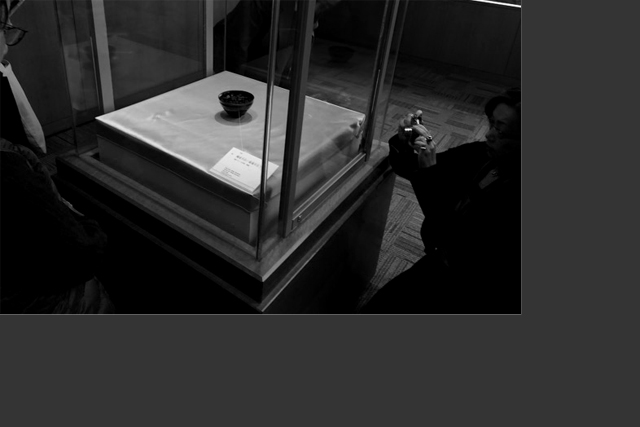
Then, at the end of January, began the Part II of the exhibition following renewal of the Seikado Bunko Art Museum. I asked a friend in radio let me accompany him to this private preview.
Seikado Bunko Art Museum “The Splendid Art of Tea Utensils from Cha-no-yu and Sen-cha”.
When you talk about the art of “tea”, what comes to the minds of most people are undoubtedly Rikyu, Oribe and the “matcha” tea bowls and tea ceremony utensils owned by and famous feudal lords. There are a myriad of tea bowls and utensils that were treasured by Hideoyoshi and Ieyasu that are relatively accessible.
What made this exhibition particularly splendid was the very unusual approach of presenting (predominantly) museum-owned “sen-cha” pieces, but in same kind of volume that they display “matcha” pieces. I assume that there are probably very few tea masters who understand artistic “sen-cha” pieces.
When you first enter, to the right is the matcha exhibition. Greeting you at the entrance is the “Tsukumo-nasu” (important cultural asset) tea caddy (a matcha container used for tea ceremony) dating back to the Southern Song Dynasty (13th-14th centuries). Although it had burned in the fire of Osaka Castle during the Summer Siege of Osaka, it was completely restored through the advanced lacquering techniques of the Edo period.
As I proceeded toward the interior, I was excited to see an flabbergasting number of other famous tea bowls and tea utensils displayed within such a limited space. Most of the pieces were of course of such quality that, no matter how hard they worked like a dog, someone like me could never come to own one. But what if I were to acquire one… is what I acquisitively imagined, or rather fantasized in the museum. If I were Lupin the thief, the very first piece from the museum’s collection that I would like to take in my hand is a Yohen Tenmoku. It needn’t be said, but even in China where it was originally made there is not a single one of these mysterious bowls that exists in “complete form”. (Very recently, it seems that an almost perfect one was discovered.) Recently a Chinese ceramic artist and a ceramic artist in Kyoto, after painstaking effort, were able to successfully create a Yohen Tenmoku similar in design to this one. It is the embodiment of the passion of ceramic arts, a description that befits one of the top echelons of tea bowls.
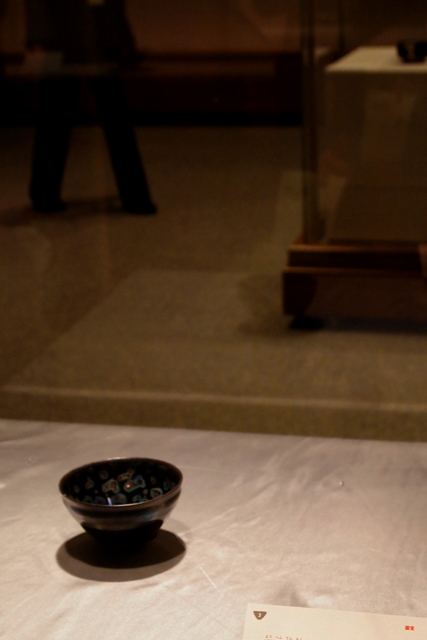
The next one, Rather than take it up in my hand, I would like to make some delicious tea in this “Ido tea bowl – Echigo”. A bout of Yohen brilliance. The polar opposite of “WABI”.

When viewed from a distance, it looked like nothing more than a brown, slightly dingy tea bowl. The more and more I viewed it up close, however, the more it was an ido tea bowl of a perfection that I had never seen before. I am sure I will be mocked for saying what I’m about to say, especially given that I’m merely an amateur potter, but it was to me the absolute ideal shape for a tea bowl. There is no doubt in my mind that the likes of Hagi and Karatsu owned and created countless numbers of splendid bowls that were of the same quality as this one. It can be said that this is the ultimate in the wabi-sabi (a special Japanese sense of ephemeral aesthetics) that Rikyu so cherished, and of palpable beauty.
Another great thing about this exhibition is that you can also view a broad and balanced array of other types of tea ceremony equipment such as vases, water containers, tea containers, tea caddies, silk pouches for holding tea caddies, etc. Just the matcha equipment section alone is worth the admission fee.
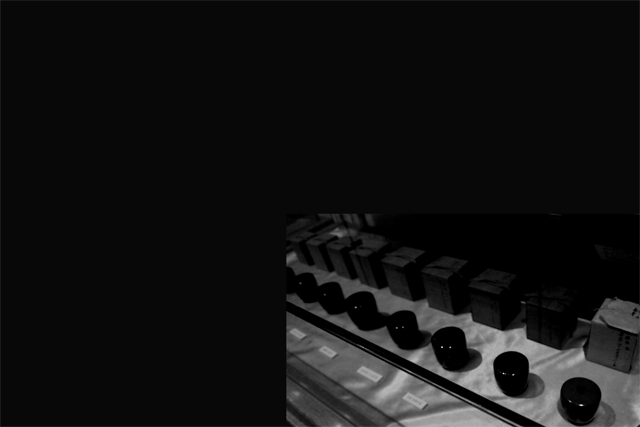
However, after proceeding further into the matcha utensils exhibit, you will finally arrive at the sen-cha exhibition space. The upper class and refined people of Japan took the matcha cultures introduced from China and Korea and molded them to suit their own elevated sense of aesthetics, style and etiquette; and that is basically the history of matcha and tea culture in Japan.
However, in the dominant culture and developmentally advanced country of China, matcha became obsolete along with the era, eventually giving way to the burgeoning sen-cha tea drinking culture and a redefining of its history. As a matter of fact, if you visit Taiwan today, there are still tea specialty shops here and there around town, and I have heard that the culture of sen-cha drinking that differs so completely from the etiquette and utensils of matcha is firmly rooted and wide-spread. It was tea experts of that culture that scheduled their visit to coincide with this exhibition, and I heard that upon seeing the numerous sen-cha utensils they had said in awe, “Even within China and greater Asia, this collection is indeed a treasure of extreme importance.”
The delicate pattern on the small porcelain bowl. The meticulous craftsmanship of the spout of the teapot. I only recently took up learning about match tea utensils, but even compared to my limited knowledge in that genre, I often find myself at a loss as to the brilliance of a piece even with the explanations of the curators and museum pamphlets. And that is precisely why this was an excellent opportunity to learn more about the non-mainstream sen-cha culture in Japan and to develop an eye for the great pieces valued by some dilettante.
Shudoro (a red clay) and murasakidoro (a purple clay) are the names of soils I often heard being used for Japanese teapots, but it was the first time I had ever seen a masterpiece made with soil called nashigawadoro (a yellow clay) . “Chachu”, “chakan”, “meiwan”, “toukan”, “chashinko”, “suichu” and other names of tea utensils that I’d never heard of grabbed my interest before I even realized what was happening.
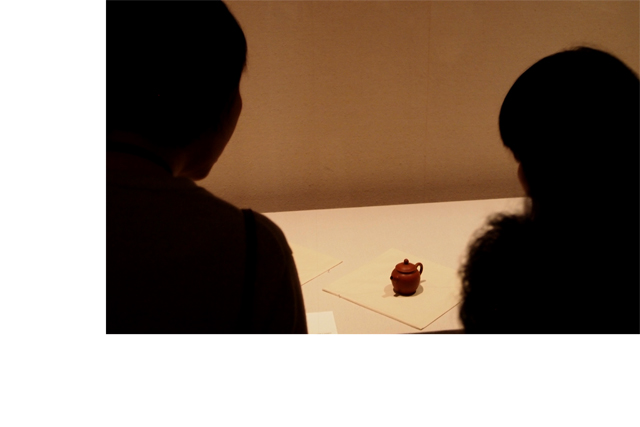
It is a rare opportunity for you to nurture your eye for quality as you view each of the Chinese masterpieces and Japanese masterpieces.
I recommend going to see this exhibition because it is so valuable in understanding the tea culture of “sen-cha”.
January 23, 2016~March 21, 2016.
http://www.seikado.or.jp/exhibition/index.html






